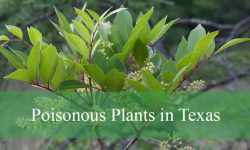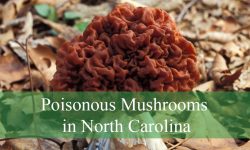A vibrant, ever-blooming garden is every gardener’s dream, and choosing flowers that come back every year is the key to achieving it. Unlike annuals that need to be replanted each season, perennials return year after year, bringing lasting beauty to your landscape with minimal effort. From delicate spring blooms to late-season color, these hardy plants create a dynamic and ever-changing display in your garden.
In this guide, we’ve compiled 39 beautiful flowers that come back every year to help you create a stunning, low-maintenance garden. Whether you prefer classic cottage-style flowers, bold tropical foliage, or pollinator-friendly plants, there’s a perennial for every garden style. Many of these flowers are drought-tolerant, deer-resistant, or ideal for attracting bees, butterflies, and hummingbirds.
With a variety of colors, shapes, and bloom times, these perennials ensure that your garden stays lively throughout the seasons. Keep reading to explore flowers that come back every year, complete with pictures and essential growing tips, so you can enjoy a flourishing landscape without the hassle of replanting each year.
Different Flowers That Come Back Every Year
Sedum
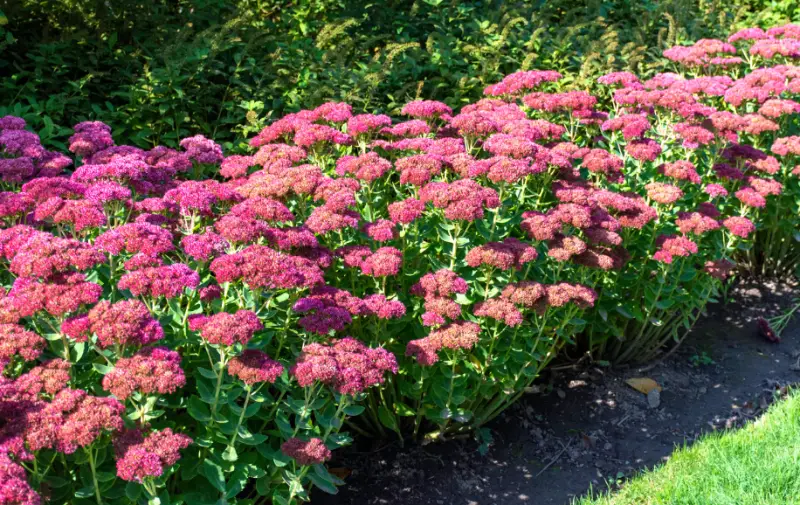
Sedum comes in a wide variety of forms, including creeping ground covers and tall, upright species. As a succulent, it is incredibly drought-tolerant once established and requires little to no watering. In fact, the easiest way to harm sedum is by overwatering, as it thrives in dry, well-drained soil. Its fleshy leaves store moisture, making it a resilient choice for low-maintenance gardens.
These hardy plants grow best in full sun and are suitable for USDA zones 3 to 11. Depending on the variety, sedum blooms from mid to late summer, producing clusters of tiny, star-shaped flowers that attract pollinators. Their versatility and ease of care make them a great option for rock gardens, borders, and container planting.
Salvia
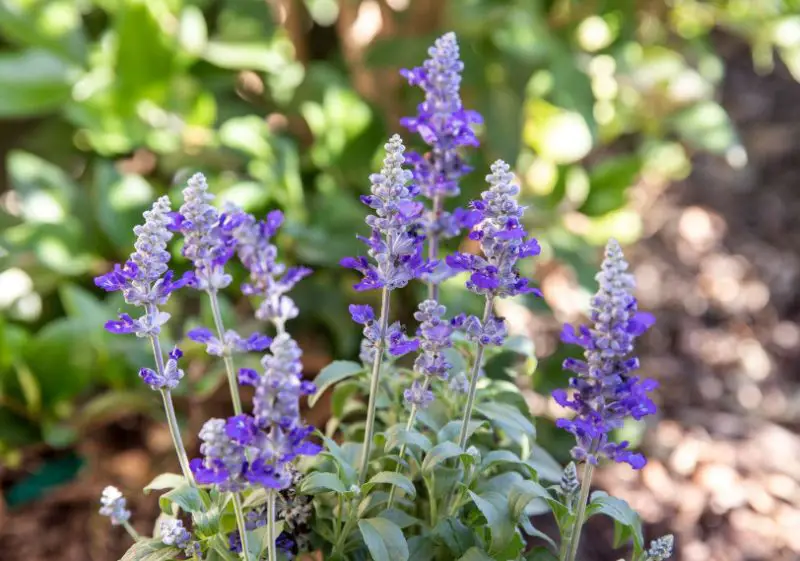
Salvia is a stunning garden addition, available in both annual and perennial varieties. With their tubular flowers in shades of pink, purple, and blue, they create an eye-catching display and serve as a magnet for hummingbirds and bees. When selecting salvia, it is essential to check whether you are purchasing an annual or a perennial species to suit your garden needs.
Thriving in full sun, salvia is well-suited for USDA zones 3 to 11. It blooms from mid to late summer, adding vibrant color to flower beds and borders. These hardy plants are also heat- and drought-tolerant, making them an excellent choice for sunny, dry areas. Regular deadheading encourages continuous blooming throughout the season.
Coneflower
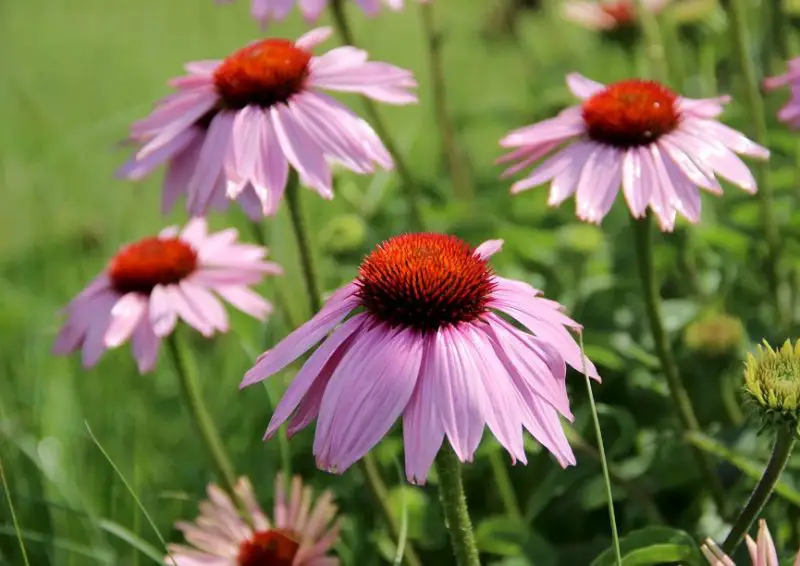
Coneflowers are tough, sun-loving perennials that thrive in hot, dry conditions. Known for their daisy-like blooms with raised centers, they come in a variety of colors, from bright pink and orange to softer shades of white and green. These long-blooming flowers attract bees and butterflies while being naturally resistant to deer and rabbits.
Best suited for USDA zones 4 to 8, coneflowers prefer part to full sun and bloom from mid to late summer. Leaving their seed heads intact after flowering provides food for birds and shelter for overwintering insects. Their adaptability and resilience make them a staple in pollinator-friendly gardens.
Columbine
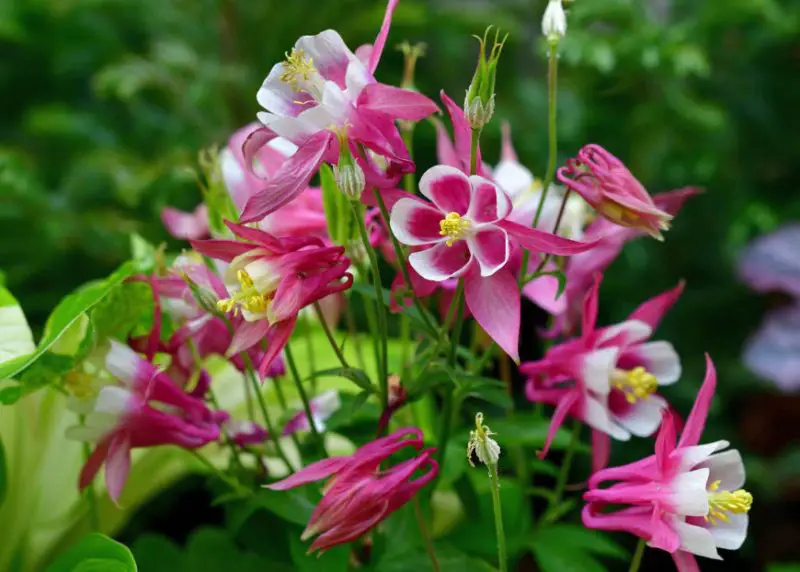
Columbine is a delicate yet striking perennial that produces uniquely shaped flowers in shades of pink, purple, blue, white, and yellow. Blooming early in the growing season, it provides much-needed nectar for pollinators, especially hummingbirds. While some varieties are short-lived, they readily self-seed, ensuring new plants appear each year.
These charming flowers thrive in part sun and are suited for USDA zones 3 to 9. Columbine blooms in early to mid-spring, adding a touch of whimsy to woodland gardens, rock gardens, and shaded borders. With their elegant, nodding blooms and feathery foliage, columbines bring a natural beauty to any landscape.
Hellebore
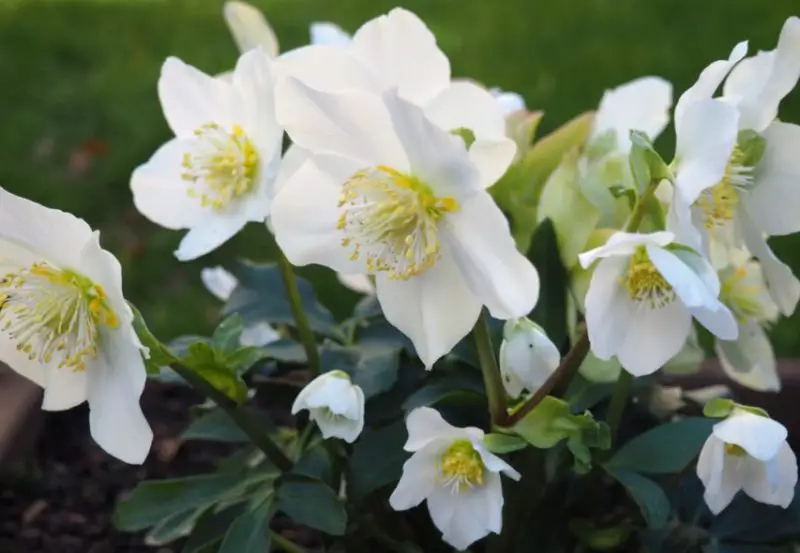
Hellebores, also known as Lenten roses, are among the first flowers to bloom, often emerging while snow is still on the ground. Their long-lasting, cup-shaped blooms appear in late winter to early spring, offering a much-needed splash of color. Available in shades of pink, purple, white, and green, hellebores are prized for their ability to brighten shaded areas.
These hardy perennials grow well in USDA zones 3 to 9 and prefer part sun to full shade. Their blooms persist well into late spring and early summer, providing continuous interest. Additionally, hellebores are deer- and rabbit-resistant, making them an excellent choice for woodland gardens and shaded borders.
Aster
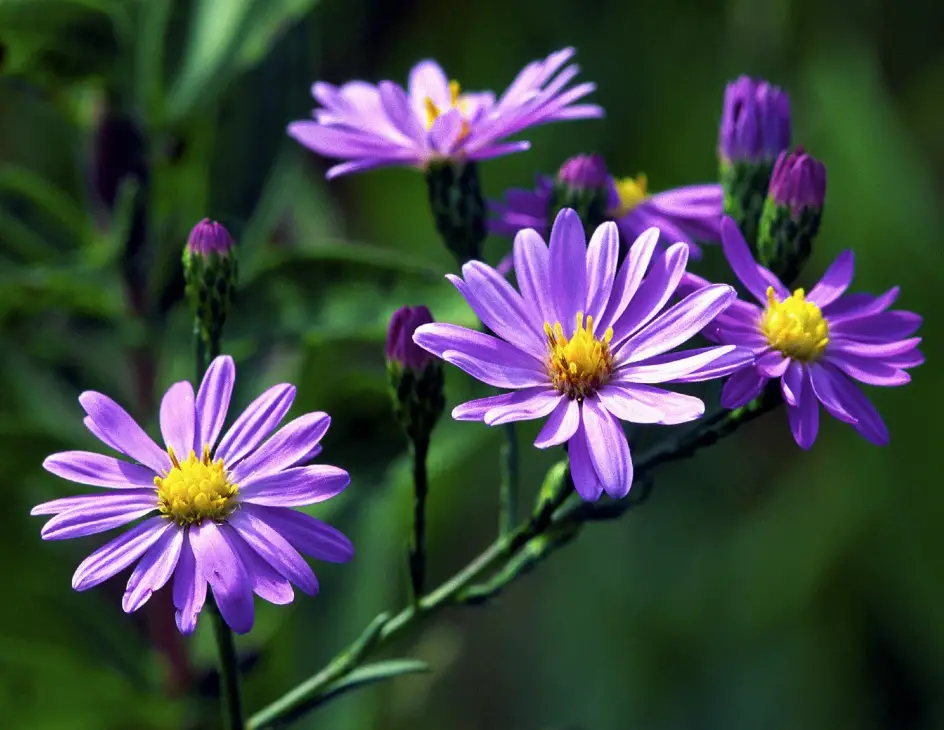
Just as the rest of the garden begins to fade, asters come to life with their vibrant, fringed flowers in shades of purple and pink. These late-season bloomers add a pop of color to borders and provide a crucial nectar source for pollinators as summer transitions to fall. Their daisy-like flowers make them a charming addition to cottage gardens and wildflower meadows.
Thriving in full sun, asters are best suited for USDA zones 3 to 8. They bloom from late summer through late fall, extending the beauty of the garden well into cooler months. Planting them at the back of flower beds ensures they serve as a striking backdrop while supporting butterflies and bees late in the season.
Black-eyed Susan
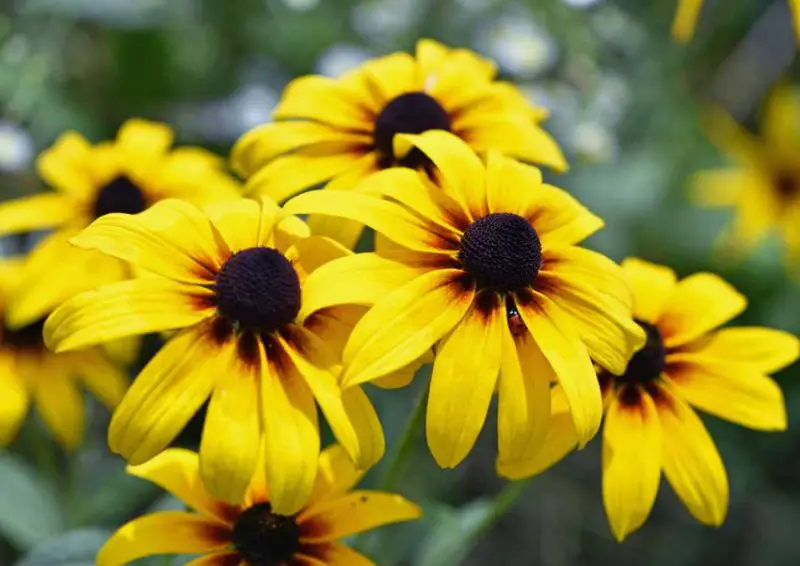
Black-eyed Susans are cheerful, sun-loving perennials with bright yellow petals and dark, button-like centers. Their bold, daisy-like blooms bring warmth to the landscape, making them a garden favorite. Known for their resilience, these flowers are drought-tolerant once established and require minimal care. Both annual and perennial varieties exist, so it’s important to check plant labels before purchasing.
Best suited for USDA zones 3 to 9, black-eyed Susans thrive in full sun and bloom in late summer. They attract pollinators while being deer-resistant, making them a low-maintenance yet eye-catching choice. Their ability to self-seed ensures a continuous display of golden blooms year after year.
Creeping Thyme
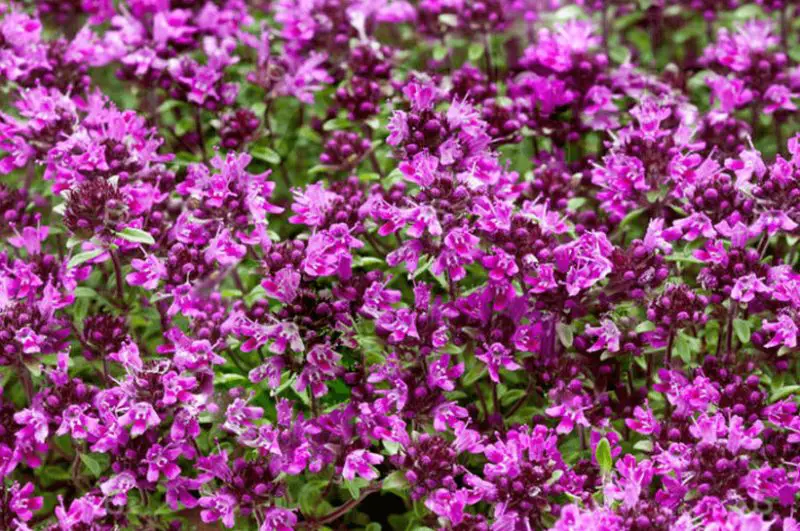
Creeping thyme is a versatile ground cover that combines beauty with practicality. This low-growing herb produces a dense carpet of tiny, aromatic leaves and delicate pink, white, or purple flowers. It looks stunning as it spills over walls, fills gaps between stepping stones, or stabilizes slopes to prevent erosion.
Thriving in full sun, creeping thyme is best suited for USDA zones 4 to 9. It blooms from late spring to early summer, attracting pollinators like bees and butterflies. Easy to grow from seed and highly drought-tolerant, this perennial is an excellent choice for adding texture and charm to rock gardens and pathways.
Siberian Iris
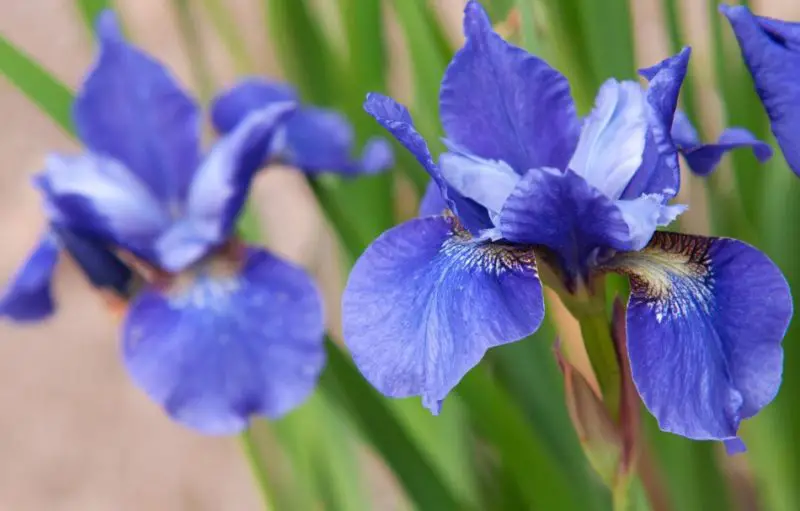
Siberian irises are elegant perennials with sword-like foliage and intricate blooms in shades of yellow, pale purple, and deep amethyst. These low-maintenance plants are highly adaptable, thriving in both rich and poor soils. Resistant to pests and diseases, they make a reliable choice for gardeners looking for long-lasting beauty.
Ideal for USDA zones 3 to 8, Siberian irises prefer full sun to part shade and bloom in early summer. Given the right conditions, they spread rapidly, allowing gardeners to divide and replant them throughout the garden. Their striking, delicate flowers bring a graceful charm to borders, pondsides, and mixed perennial beds.
Catmint
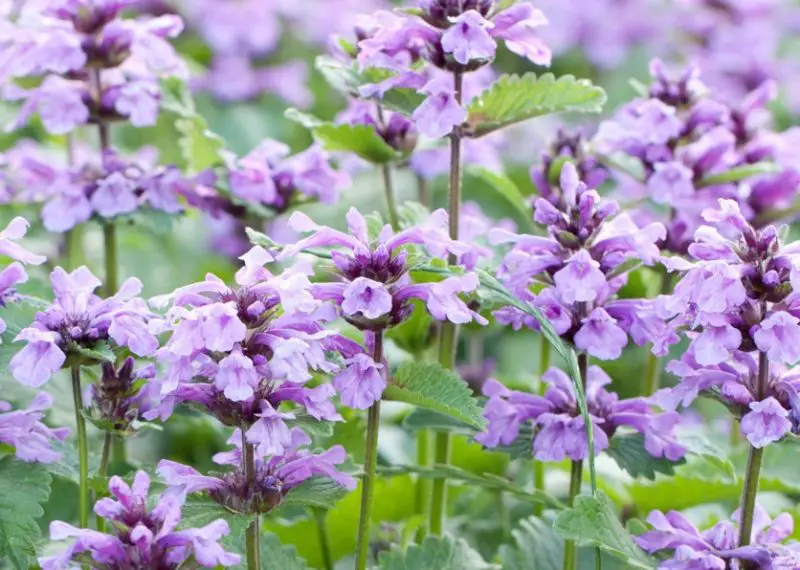
Catmint is a hardy perennial that thrives on neglect, making it an excellent choice for low-maintenance gardens. Its silvery, aromatic foliage forms a soft mound, while spikes of lavender-purple flowers bloom continuously from late spring to fall. Bees, butterflies, and hummingbirds adore its nectar-rich blossoms, while deer and rabbits tend to avoid it due to its minty scent.
This resilient plant grows well in USDA zones 3 to 8 and prefers full sun to part shade. Drought-tolerant and unfussy about soil quality, catmint flourishes even in poor conditions. With its long-lasting blooms and attractive foliage, it’s a perfect choice for borders, cottage gardens, and pollinator-friendly landscapes.
Thrift
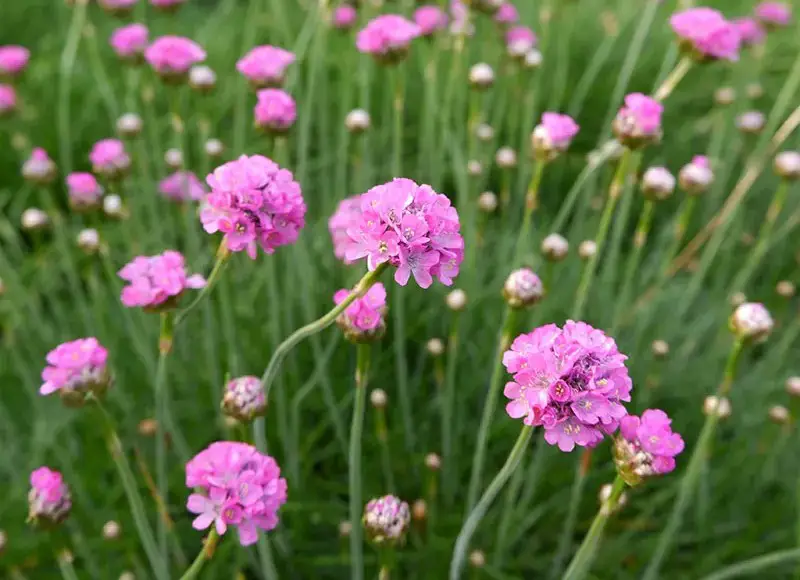
Thrift is a delightful perennial that adds texture and charm to gardens with its grassy foliage and compact, ball-shaped flowers. Its delicate blooms, available in shades of pink, white, and lavender, create a soft yet striking contrast against its evergreen leaves. This resilient plant thrives in rocky, well-drained soils, making it an excellent choice for rock gardens, borders, and coastal landscapes.
Ideal for USDA zones 4 to 8, thrift prefers full sun and blooms from early to mid-summer. Not only is it exceptionally cold-hardy, but it also tolerates poor soils and requires minimal maintenance. Its low-growing habit and mounding shape make it a perfect edging plant for pathways and garden beds.
Peony
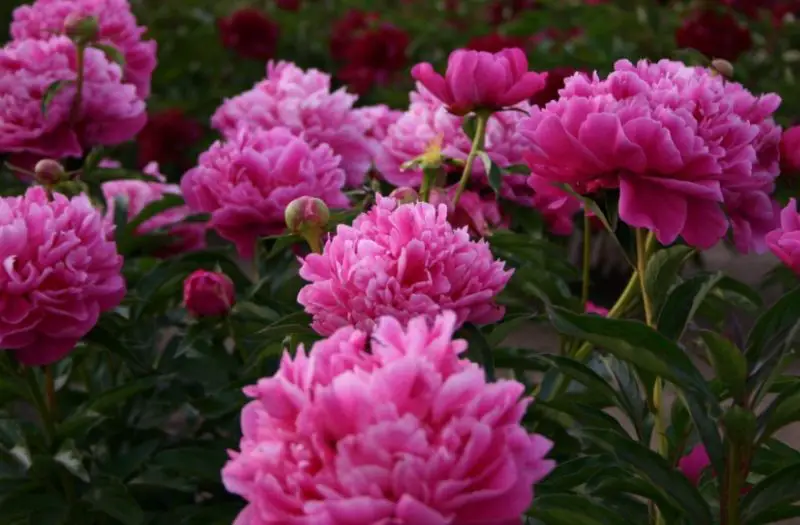
Peonies are beloved for their large, lush petals and delightful fragrance, making them a timeless favorite in gardens. Their old-fashioned charm is experiencing a resurgence in popularity, bringing elegance and romance to outdoor spaces. These flowers are also incredibly long-lived, with some plants thriving for up to a century, making them a worthwhile investment for any garden.
Peonies thrive in full sun and bloom from late spring to early summer, adding vibrant color to the landscape. They are hardy in USDA zones 3 to 8 and require well-drained soil for optimal growth. With minimal care, these perennials will return year after year, producing breathtaking blooms that symbolize prosperity and good fortune.
Foxglove
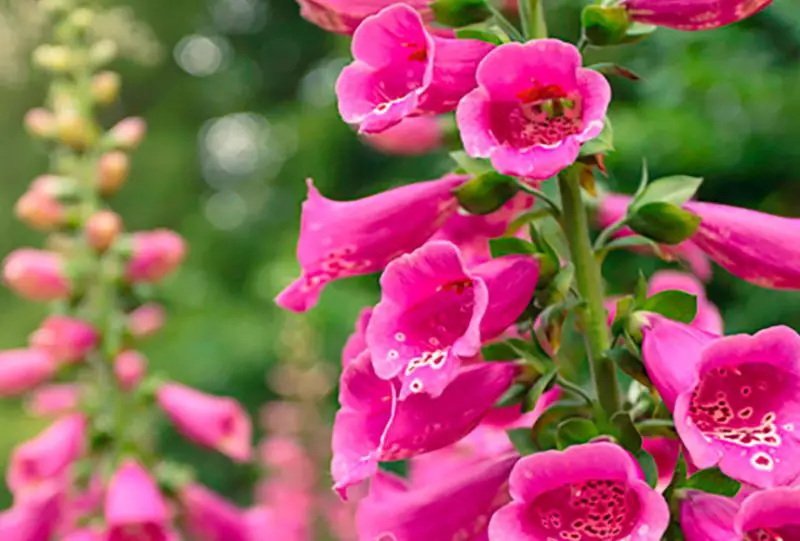
Foxgloves, with their tall, stately presence, are making a comeback in cottage-style gardens. Their bell-shaped flowers grow in vertical clusters, creating an elegant and nostalgic display. As a biennial or short-lived perennial, foxgloves typically bloom in their second year, but they readily self-seed, ensuring their return season after season.
These charming flowers thrive in full sun to partial shade and are suited for USDA zones 4 to 9. They bloom in early summer, attracting bees and hummingbirds to the garden. Taller varieties may require staking to keep them upright. With their enchanting appeal, foxgloves bring a fairytale-like beauty to any outdoor space.
Lavender
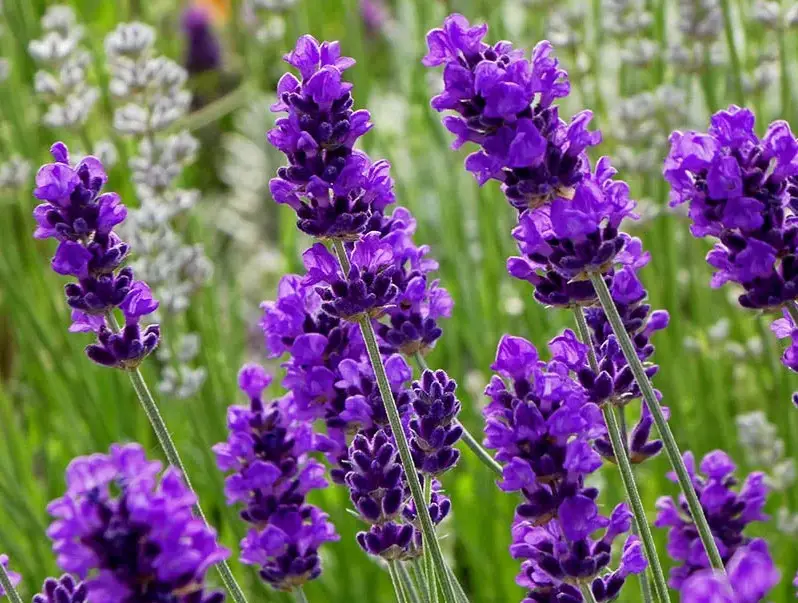
Lavender is an essential addition to any romantic garden, known for its soothing scent and beautiful purple spikes. This resilient herb thrives in poor, rocky soils and becomes drought-tolerant once established. Its aromatic qualities make it popular for use in sachets, essential oils, and culinary dishes.
Lavender flourishes in full sun and is best suited for USDA zones 5 to 9. It blooms in mid-summer, filling the air with its signature fragrance. While most lavender plants live between five and ten years, choosing a variety suited to your climate ensures long-term success. With minimal maintenance, lavender provides both visual and sensory delight.
Yarrow
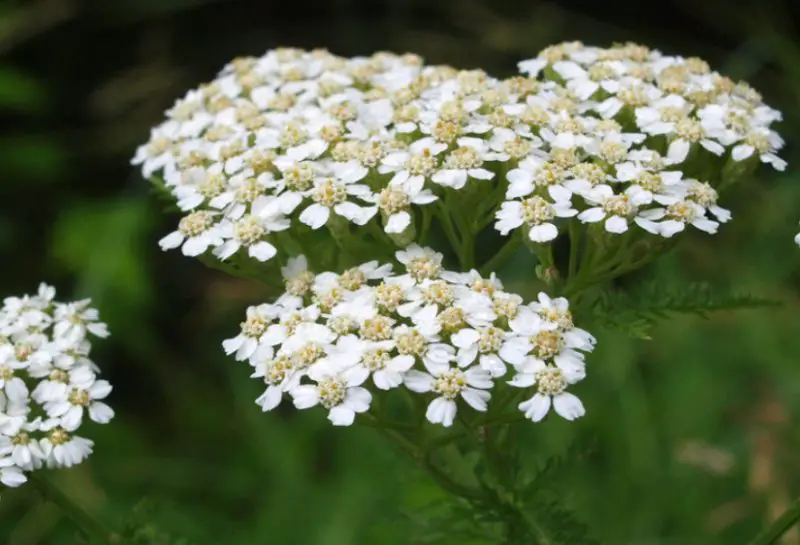
Yarrow is a tough, low-maintenance perennial that thrives in hot, dry conditions. It’s well-suited for gardens with poor soil and doesn’t tolerate excess moisture. The tiny clustered flowers come in a variety of shades, including white, yellow, pink, and apricot, making yarrow a versatile choice for landscaping.
This resilient plant grows best in full sun and is hardy in USDA zones 3 to 9. Blooming from mid to late summer, yarrow attracts pollinators such as butterflies and bees. Additionally, its flowers can be dried and used in floral arrangements. With its adaptability and vibrant colors, yarrow is a garden favorite.
Daylily
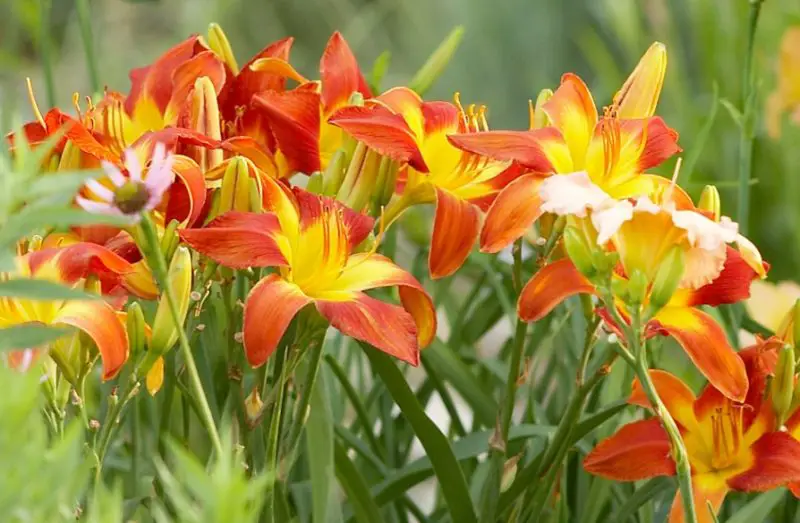
Daylilies are known for their bright, trumpet-shaped blooms, each lasting only a day—hence their name. Despite their short-lived flowers, these perennials produce multiple blooms per stem, ensuring a continuous display throughout mid-summer. Their ability to spread quickly makes them an excellent choice for filling garden beds.
These hardy plants thrive in full sun and are suited for USDA zones 4 to 9. Available in an array of colors, from soft yellows to deep reds, daylilies add warmth and charm to any landscape. However, they are a favorite snack for deer, so gardeners in deer-prone areas may need to take precautions. With minimal care, daylilies provide long-lasting beauty.
Cranesbill
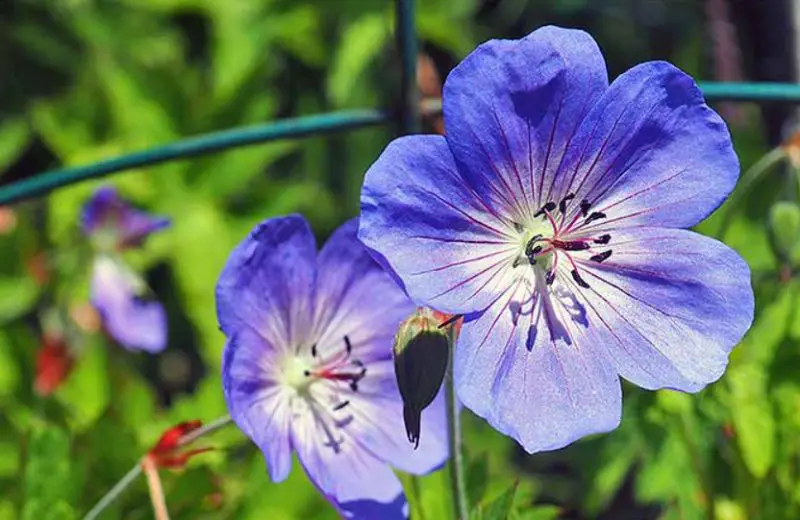
Cranesbill, also known as perennial geranium, is a versatile ground cover with delicate, cup-shaped flowers that hover above attractive, lobed foliage. Its sprawling nature allows it to quickly fill garden spaces, making it an excellent choice for naturalizing flower beds and borders. Many varieties rebloom throughout the season, especially when trimmed back after the first flush of flowers.
Thriving in USDA zones 3 to 9, cranesbill grows well in part to full sun and blooms from late spring to early summer. Its fragrant, minty-scented leaves naturally repel deer and rabbits, helping to keep gardens undisturbed. With its ability to spread and adapt to various conditions, cranesbill is a staple for cottage gardens and pollinator-friendly landscapes.
Allium
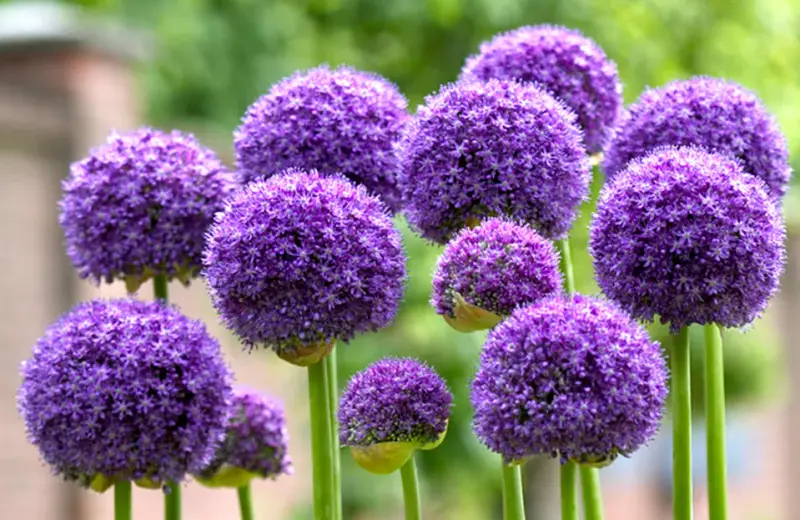
Allium, commonly known as ornamental onion, is loved for its whimsical, globe-shaped flowers that sit atop tall, sturdy stems. These perennials add architectural interest to gardens and come in a range of sizes, from tiny chive-like varieties to towering species with blooms as large as a softball. Their unique shape and vibrant purple, pink, or white hues make them a standout in any flower bed.
Well-suited for USDA zones 3 to 9, alliums thrive in part to full sun and bloom from late spring to late summer, depending on the variety. They are highly resistant to deer and rabbits, making them a reliable choice for wildlife-heavy gardens. Additionally, alliums attract pollinators, ensuring a lively and buzzing garden throughout the growing season.
Balloon Flower
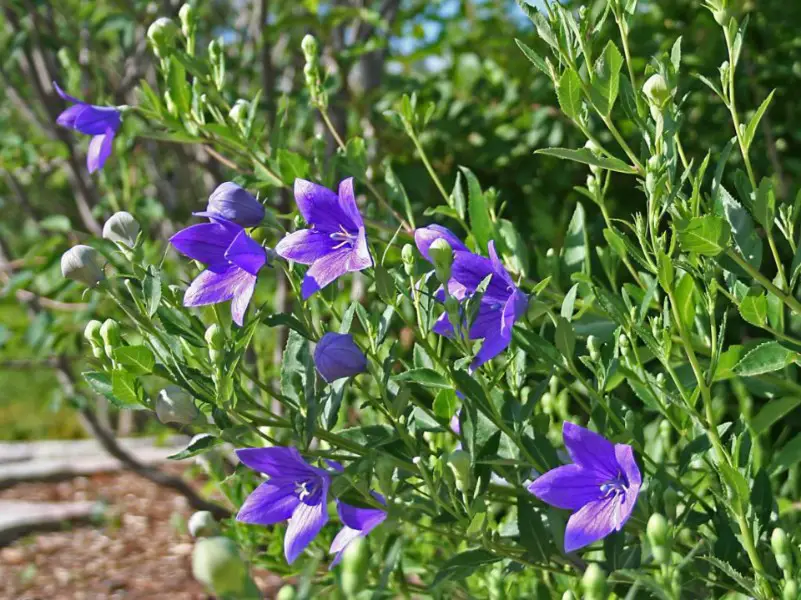
Balloon flowers get their name from their distinctive, inflated buds that pop open into star-shaped blooms in shades of blue, pink, or white. These charming perennials bring a touch of whimsy to flower beds and borders. Their compact growth habit makes them perfect for small gardens, containers, and cottage-style landscapes.
Hardy in USDA zones 3 to 8, balloon flowers prefer part to full sun and bloom in mid-summer. They thrive in well-drained soil and do not tolerate excessive moisture, so proper drainage is essential. Once established, they are drought-tolerant and require minimal care, making them a fuss-free yet enchanting addition to any perennial garden.
Coral Bells
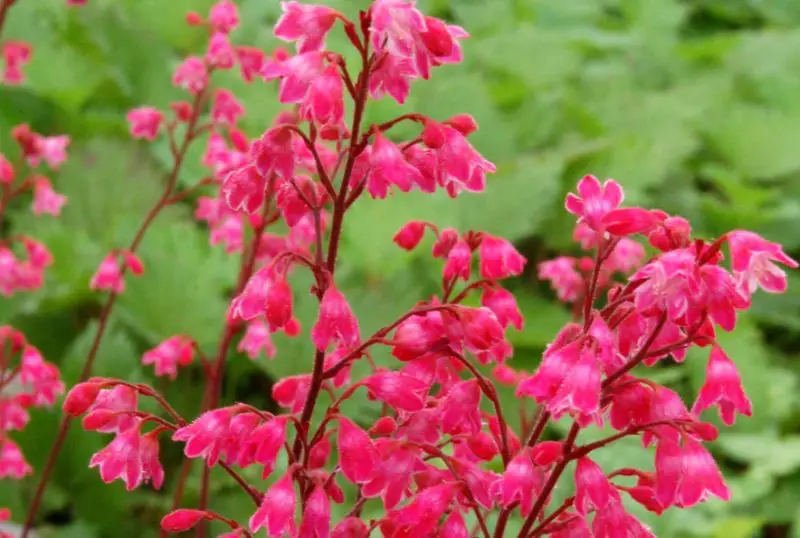
Coral bells, or heuchera, are prized more for their striking foliage than their delicate flower spikes. Their leaves come in a dazzling array of colors, from lime green and golden yellow to deep burgundy and nearly black. This perennial adds year-round interest to gardens with its ever-changing leaf tones and compact mounding habit. While its small, bell-shaped flowers are subtle, hummingbirds are particularly drawn to them.
Thriving in USDA zones 4 to 9, coral bells grow best in part to full sun and bloom in mid-summer. They are highly adaptable and can flourish in a variety of soil conditions, though they prefer well-drained soil. Ideal for borders, shade gardens, and container plantings, coral bells offer a bold pop of color and texture throughout the growing season.
Roman Chamomile
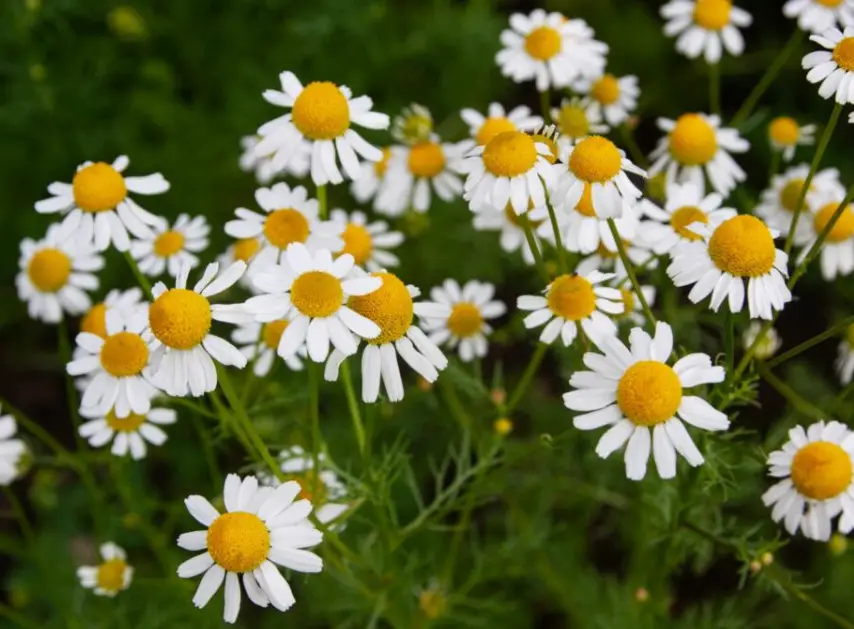
Roman chamomile is a charming perennial with tiny, daisy-like white flowers and feathery, aromatic foliage. It’s often used as a decorative ground cover or in herb gardens due to its low-growing habit and soft, fern-like leaves. The flowers can be harvested fresh or dried to make soothing herbal tea or to add a delicate floral note to salads.
Hardy in USDA zones 5 to 8, Roman chamomile thrives in full sun and blooms in mid-summer. Unlike its annual cousin, German chamomile, this variety will return year after year, making it a great long-term addition to cottage gardens, borders, or walkways. Its fragrance and visual appeal make it both a functional and beautiful plant.
Penstemon
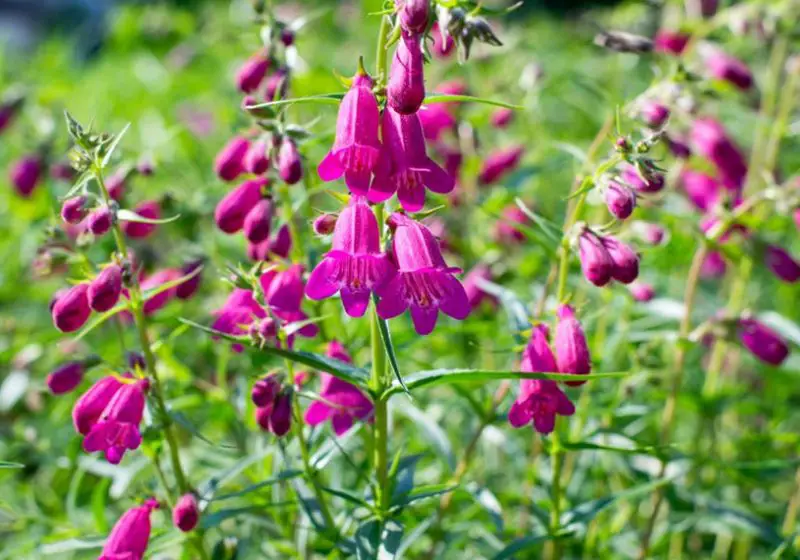
Penstemon, also known as beardtongue, is a striking perennial with tall flower spikes that attract hummingbirds and pollinators. Its tubular flowers, available in shades of red, pink, purple, and white, contrast beautifully with its green, bronze, or burgundy foliage. Some varieties self-seed, allowing them to naturalize and fill garden spaces over time.
Growing well in USDA zones 3 to 9, penstemon prefers full sun and blooms throughout summer. It thrives in well-drained soil and is drought-tolerant once established, making it a perfect choice for xeriscaping or low-maintenance gardens. Its ability to withstand dry conditions and its long-lasting blooms make it a valuable addition to any pollinator-friendly landscape.
Lamium
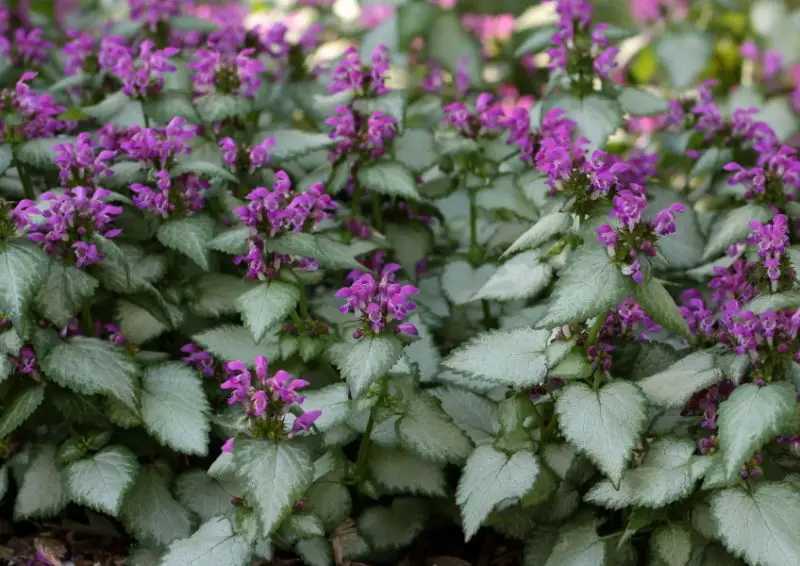
Lamium, or dead nettle, is a versatile ground cover with eye-catching foliage and delicate, hooded flowers. The leaves often feature silvery markings that brighten up shaded garden areas, while the flowers bloom in shades of pink, purple, or white. This low-growing perennial is ideal for filling gaps between taller plants or as an edging plant along pathways.
Thriving in USDA zones 3 to 9, lamium is drought-tolerant once established and flourishes in full sun. It blooms throughout summer and is deer- and rabbit-resistant, making it a great option for gardens prone to browsing animals. With its ability to spread quickly, lamium is an excellent choice for erosion control on slopes or in woodland gardens.
Chrysanthemum
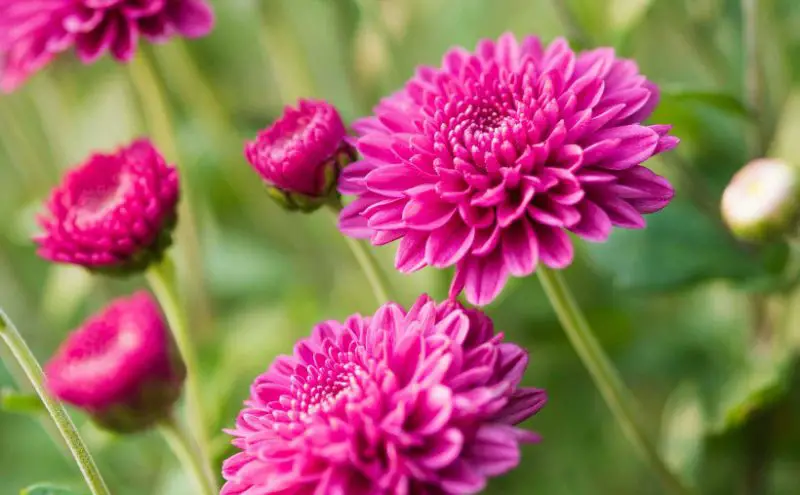
Chrysanthemums, commonly known as mums, bring vibrant color to the garden when most summer flowers are fading. Available in a wide range of hues, from soft pastels to rich autumnal tones, these hardy perennials are a staple of fall gardens. Their dense clusters of flowers create a bold display, making them a favorite for borders, containers, and seasonal landscaping.
Best suited for USDA zones 5 to 9, chrysanthemums thrive in full sun and bloom in early fall. To ensure their survival through winter, plant them early in the growing season so they have time to establish strong roots. Otherwise, they can be treated as annuals. Their ability to provide late-season color and attract pollinators makes them a valuable addition to any perennial garden.
Coreopsis
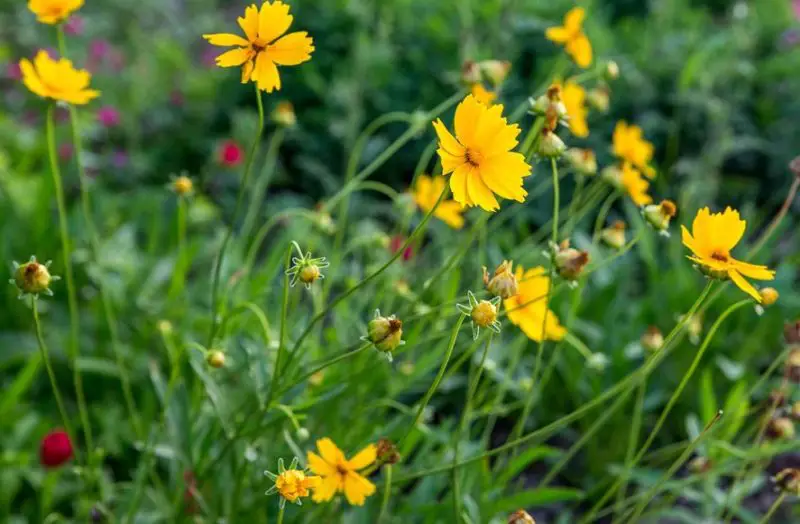
Coreopsis, also known as tickseed, is a cheerful, daisy-like flower that brings bright pops of color to the garden. Available in yellow, red, orange, and bi-colored varieties, these flowers bloom in abundance and are beloved by bees and butterflies. With their long-lasting and often re-blooming nature, they provide continuous beauty throughout the growing season.
Growing in USDA zones 4 to 9, coreopsis thrives in full sun and blooms in mid-summer. Deadheading spent flowers will encourage additional blooms, extending the flowering period. This drought-tolerant, low-maintenance perennial is perfect for wildflower meadows, cottage gardens, and borders, offering a lively and effortless display of color.
Bleeding Heart
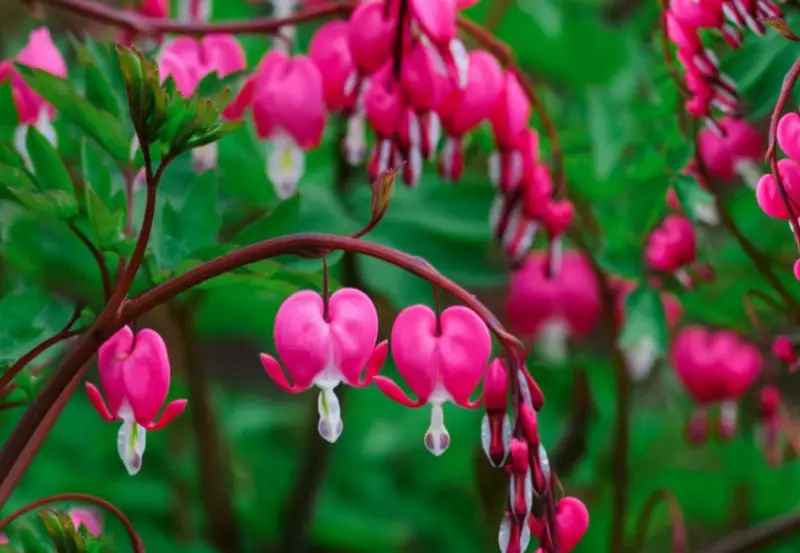
Bleeding heart is a timeless perennial with delicate, heart-shaped flowers that dangle from graceful, arching stems. Blooming in shades of pink and white, it adds a romantic, old-fashioned charm to spring gardens. This early bloomer pairs beautifully with tulips and other spring flowers, creating a magical woodland setting.
Growing well in USDA zones 3 to 9, bleeding heart thrives in part to full shade and prefers moist, well-drained soil. It blooms in mid to late spring, providing an early-season burst of color before going dormant in summer. Its graceful foliage and unique flowers make it a standout in shaded garden beds.
Elephant’s Ear
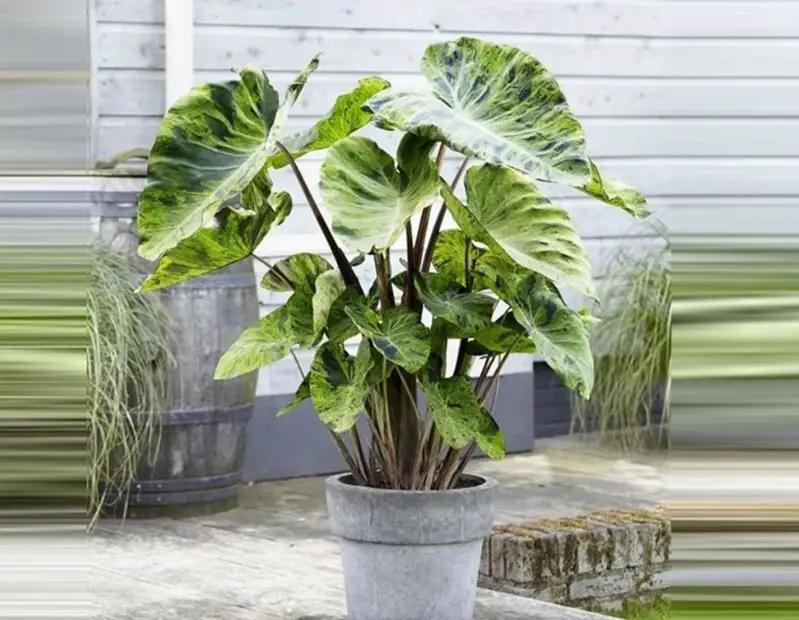
Elephant’s ear is a bold and dramatic plant known for its massive, tropical-looking leaves that resemble elephant ears. These striking foliage plants add an exotic touch to landscapes, whether grown in garden beds or large containers. Their lush greenery brings a tropical feel, making them an eye-catching focal point.
Thriving in USDA zones 9 to 11, elephant’s ear grows well in both sun and shade but benefits from afternoon shade in hot climates. While it doesn’t bloom often, its sheer size and striking leaves make it a favorite for gardeners seeking a statement plant. In cooler climates, the bulbs should be dug up and stored over winter.
Bee Balm
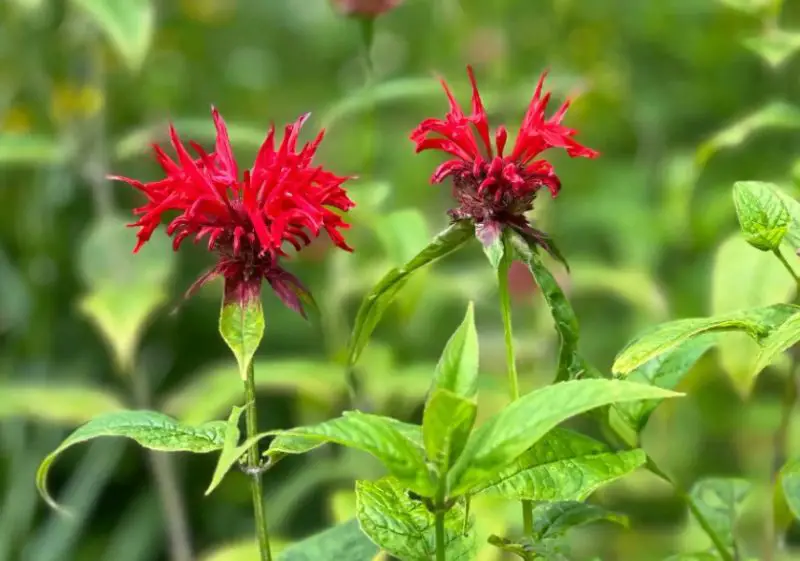
Bee balm is a vibrant perennial that attracts pollinators with its unique, fringed flowers in shades of red, pink, and purple. It’s a favorite of bees, butterflies, and hummingbirds, making it a great addition to pollinator-friendly gardens. Its aromatic leaves can also be used in herbal teas, adding to its charm.
Hardy in USDA zones 3 to 9, bee balm thrives in full sun and blooms in mid-summer. While it’s easy to grow, it requires good air circulation to prevent powdery mildew. With its showy blooms and ecological benefits, bee balm is a must-have for any wildlife garden.
Hummingbird Mint
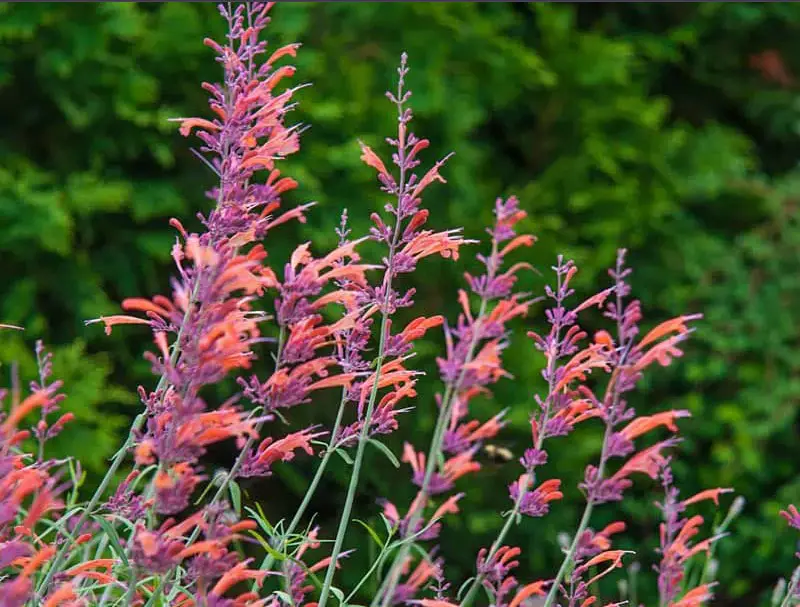
Hummingbird mint, also known as Agastache, is a stunning perennial known for its tall, spiky flowers that bloom for weeks. True to its name, this plant is a favorite of hummingbirds, while its fragrant, minty foliage keeps deer and rabbits at bay. It’s drought-tolerant and thrives in dry, sunny conditions.
Ideal for USDA zones 5 to 10, hummingbird mint prefers full sun and blooms in mid-summer. Its long-lasting flowers and ability to withstand tough conditions make it a low-maintenance yet rewarding choice for borders, pollinator gardens, and rock gardens.
Veronica
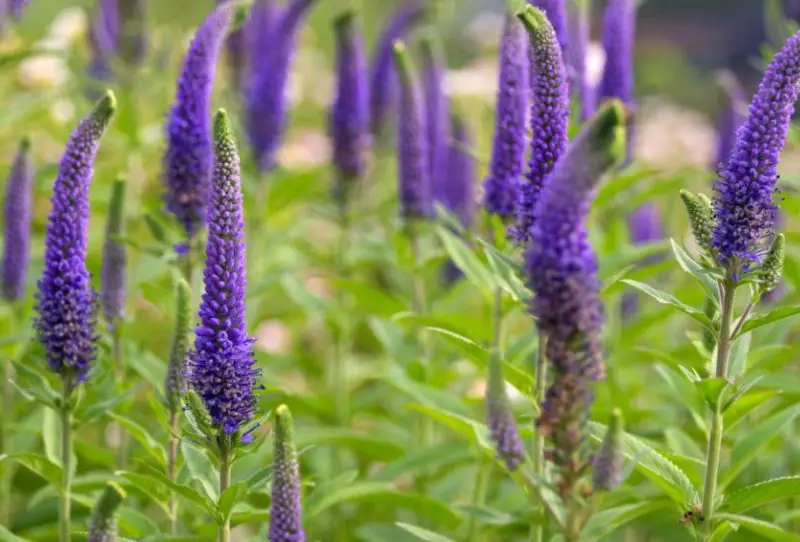
Veronica, also called speedwell, is a charming perennial with tall, slender spikes of flowers in shades of purple, pink, or white. Its nectar-rich blooms attract bees and butterflies, adding life to the garden. Some varieties grow upright, while others spread as ground cover, making them versatile for different landscape uses.
Thriving in USDA zones 4 to 8, Veronica loves full sun and blooms from early summer to fall, depending on the variety. It’s an excellent choice for borders, rock gardens, or as a colorful ground cover, offering months of beautiful blooms with minimal maintenance.
Lady’s Mantle
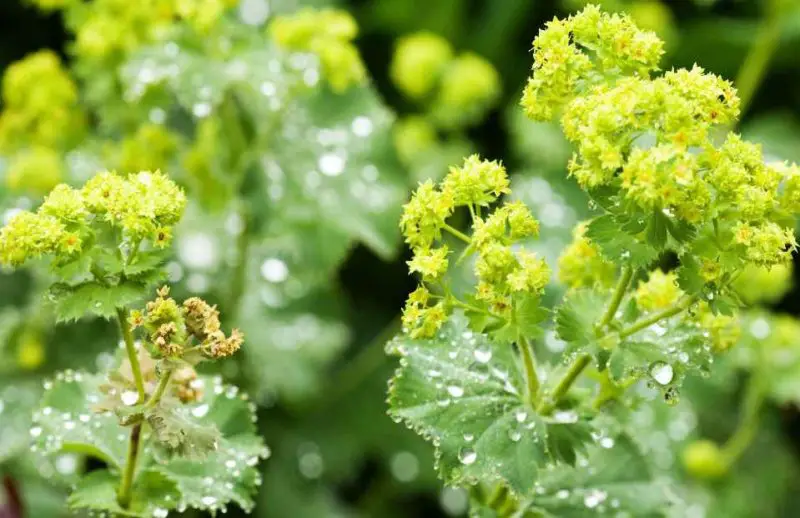
Lady’s mantle is an elegant ground cover plant with scalloped, velvety green leaves that catch and reflect raindrops like tiny jewels. In late spring, it produces delicate, airy clusters of chartreuse flowers that add a soft, ethereal look to garden borders.
Hardy in USDA zones 3 to 7, lady’s mantle prefers full sun to part shade and thrives in moist, well-drained soil. Its unique foliage, long-lasting blooms, and deer resistance make it an excellent choice for cottage gardens, pathways, and naturalized landscapes.

